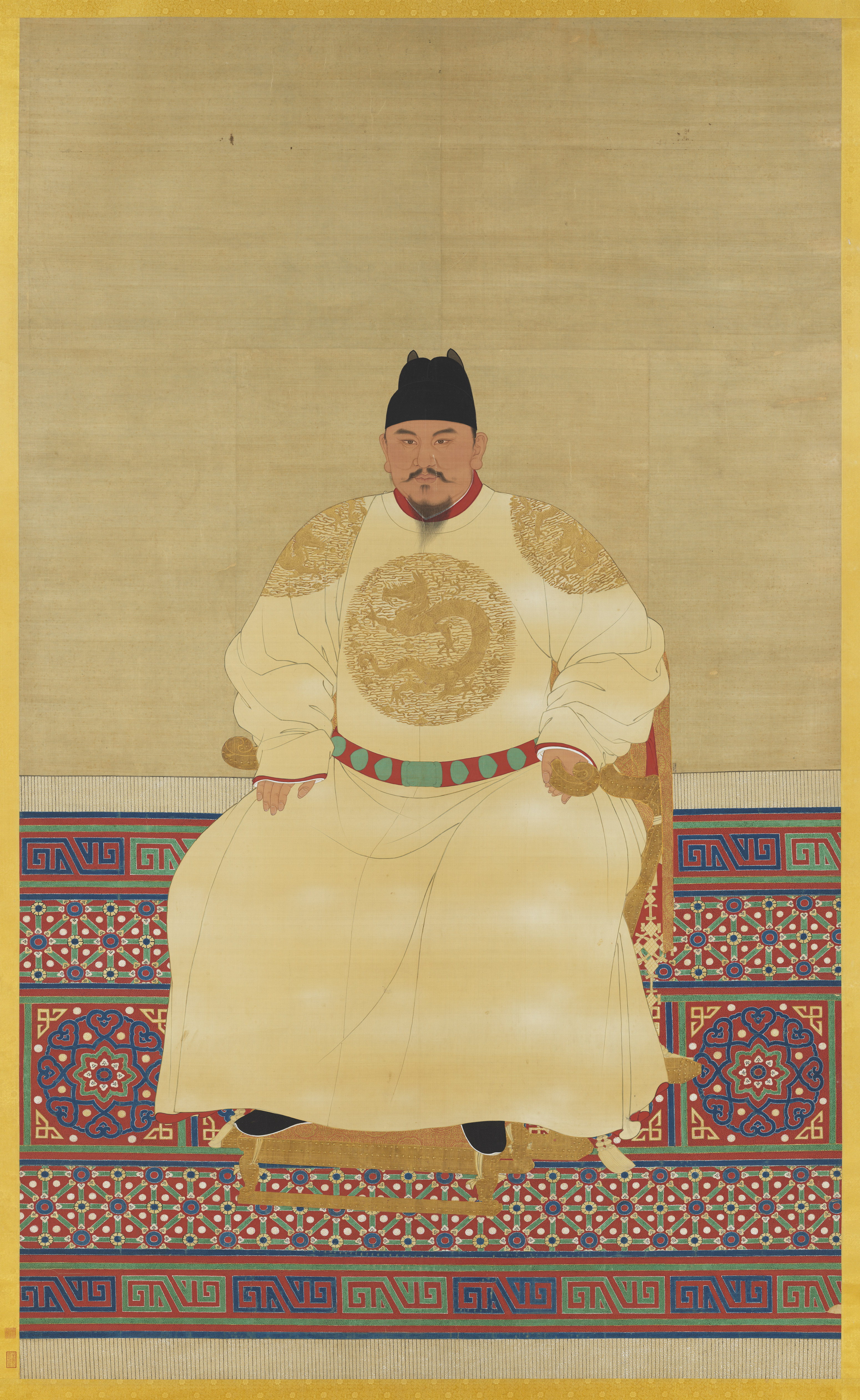Search Results - Chao, Ming
Ming dynasty
 | mi =
| y = Mìhng chìuh
| ci =
| j = Ming4 ciu4
| suz = Mín záu
| poj = Bêng tiâu
| tl = Bîng tiâu
| altname = Dynastic name
| c2 = 大明
| p2 = Dà Míng
| w2 =
| y2 = Daaih Mìhng
| ci2 =
| wuu2 = Da men
| j2 = Daai6 ming4
| poj2 = Tāi-bêng
| tl2 = Tāi-bîng
| bpmf = ㄇㄧㄥˊ ㄔㄠˊ
| tp = Míng cháo
| bpmf2 = ㄉㄚˋ ㄇㄧㄥˊ
| tp2 = Dà Míng
}}
| mi =
| y = Mìhng chìuh
| ci =
| j = Ming4 ciu4
| suz = Mín záu
| poj = Bêng tiâu
| tl = Bîng tiâu
| altname = Dynastic name
| c2 = 大明
| p2 = Dà Míng
| w2 =
| y2 = Daaih Mìhng
| ci2 =
| wuu2 = Da men
| j2 = Daai6 ming4
| poj2 = Tāi-bêng
| tl2 = Tāi-bîng
| bpmf = ㄇㄧㄥˊ ㄔㄠˊ
| tp = Míng cháo
| bpmf2 = ㄉㄚˋ ㄇㄧㄥˊ
| tp2 = Dà Míng
}}The Ming dynasty, officially the Great Ming, was an imperial dynasty of China that ruled from 1368 to 1644, following the collapse of the Mongol-led Yuan dynasty. The Ming was the last imperial dynasty of China ruled by the Han people, the majority ethnic group in China. Although the primary capital of Beijing fell in 1644 to a rebellion led by Li Zicheng (who established the short-lived Shun dynasty), numerous rump regimes ruled by remnants of the Ming imperial family, collectively called the Southern Ming, survived until 1662.
The Ming dynasty's founder, the Hongwu Emperor (1368–1398), attempted to create a society of self-sufficient rural communities ordered in a rigid, immobile system that would guarantee and support a permanent class of soldiers for his dynasty: the empire's standing army exceeded one million troops and the navy's dockyards in Nanjing were the largest in the world. He also took great care breaking the power of the court eunuchs and unrelated magnates, enfeoffing his many sons throughout China and attempting to guide these princes through the ''Huang-Ming Zuxun'', a set of published dynastic instructions. This failed when his teenage successor, the Jianwen Emperor, attempted to curtail his uncle's power, prompting the Jingnan campaign, an uprising that placed the Prince of Yan upon the throne as the Yongle Emperor in 1402. The Yongle Emperor established Yan as a secondary capital and renamed it Beijing, constructed the Forbidden City, and restored the Grand Canal and the primacy of the imperial examinations in official appointments. He rewarded his eunuch supporters and employed them as a counterweight against the Confucian scholar-bureaucrats. One eunuch, Zheng He, led seven enormous voyages of exploration into the Indian Ocean as far as Arabia and the eastern coasts of Africa. Hongwu and Yongle emperors had also expanded the empire's rule into Inner Asia.
The rise of new emperors and new factions diminished such extravagances; the capture of the Emperor Yingzong of Ming during the 1449 Tumu Crisis ended them completely. The imperial navy was allowed to fall into disrepair while forced labor constructed the Liaodong palisade and connected and fortified the Great Wall into its modern form. Wide-ranging censuses of the entire empire were conducted decennially, but the desire to avoid labor and taxes and the difficulty of storing and reviewing the enormous archives at Nanjing hampered accurate figures. Estimates for the late-Ming population vary from 160 to 200 million,; for the higher, see .}} but necessary revenues were squeezed out of smaller and smaller numbers of farmers as more disappeared from the official records or "donated" their lands to tax-exempt eunuchs or temples. ''Haijin'' laws intended to protect the coasts from Japanese pirates instead turned many into smugglers and pirates themselves.
By the 16th century, the expansion of European trade—though restricted to islands near Guangzhou such as Macau—spread the Columbian exchange of crops, plants, and animals into China, introducing chili peppers to Sichuan cuisine and highly productive maize and potatoes, which diminished famines and spurred population growth. The growth of Portuguese, Spanish, and Dutch trade created new demand for Chinese products and produced a massive influx of South American silver. This abundance of specie re-monetized the Ming economy, whose paper money had suffered repeated hyperinflation and was no longer trusted. While traditional Confucians opposed such a prominent role for commerce and the newly rich it created, the heterodoxy introduced by Wang Yangming permitted a more accommodating attitude. Zhang Juzheng's initially successful reforms proved devastating when a slowdown in agriculture was produced by the Little Ice Age. The value of silver rapidly increased because of a disruption in the supply of imported silver from Spanish and Portuguese sources, making it impossible for Chinese farmers to pay their taxes. Combined with crop failure, floods, and an epidemic, the dynasty collapsed in 1644 as Li Zicheng's rebel forces entered Beijing. Li then established the Shun dynasty, but it was defeated shortly afterwards by the Manchu-led Eight Banner armies of the Qing dynasty, with the help of the defecting Ming general Wu Sangui. Provided by Wikipedia

